Connecting the wires. Stop twisting!

Stop twisting! Well really, stop it.
There are a lot of funny things for connecting a wide variety of wires, but still the technology "bite off the teeth with insulation, twist, wrap with electrical tape" is still alive.
About ordinary wiring
When I see this, I feel uncomfortable ...
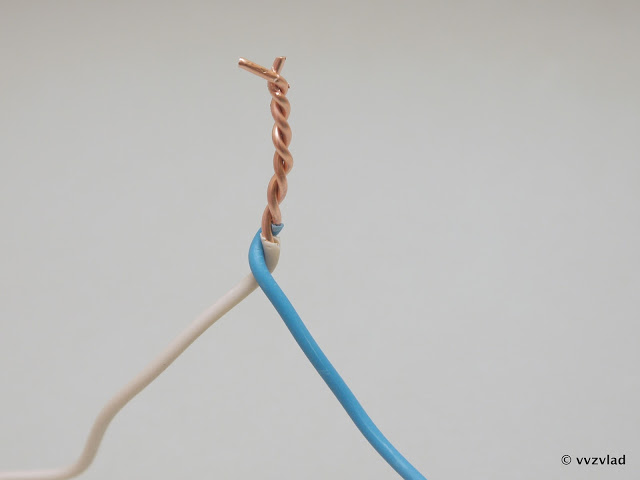
And when I see this, I want to kill the author ...
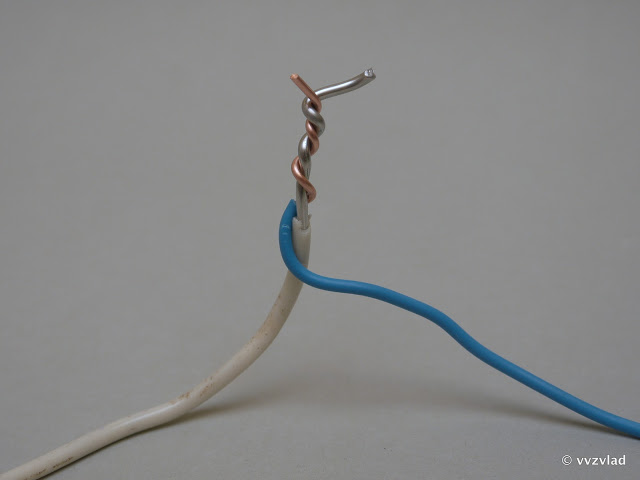
The fact is that to connect copper and aluminum wires by twisting is by no means impossible.
There are several reasons for this. The main one is the problem of oxidation of an aluminum wire in contact with a copper wire - a galvanic pair is formed, which slowly but surely destroys the connection. And the faster, the greater the current through this twist goes.
Of course, in a couple of hours, this connection will not fall apart, even if through it turn on the heater or kettle. But over time, the resistance will slowly increase, because of what twist will warm more and stronger. And if the load is not constant, but episodic, then the constant heating-cooling cycles will worsen the conductivity even more. Different materials on heating expand differently, and turning on and off the load through such twisting will be equivalent to constant jerking it back and forth. You understand, it will not lead to anything good.
Well, if you just heat up, it can usually be traced by the characteristic smell of burnt insulation. But the sparking of the connection, especially next to the wallpaper or something flammable, can easily turn into a fire.
Polyethylene Terminals
Here's a piece Sold in any hardware store, it's worth a penny ...
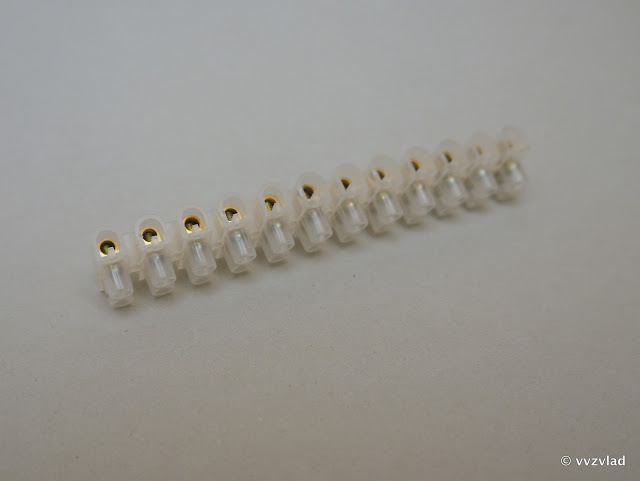
Inside is such a brass case with two screws ...
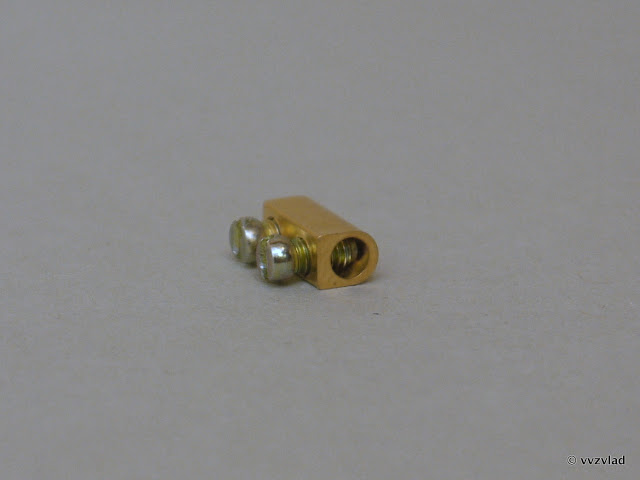
We push the wires into it, tighten the screws ...
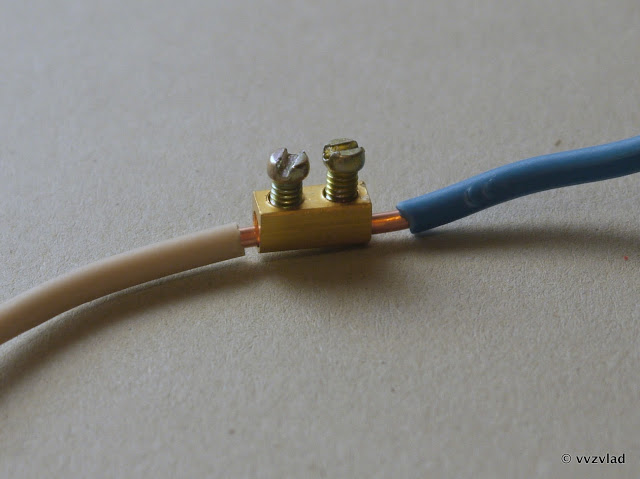
I specially pulled it out for clarity. Together with the insulation, it will look like this ...

Each segment can be cut off. It would seem an ideal option. But there is a nuance!
Although these nuances and shortcomings - a car and a small cart, do not be led on simplicity:
- Do not clamp aluminum. The aluminum core has a fluidity under constant pressure, and after a while contact can easily disappear or deteriorate. What is fraught with - you know, by heating and fire. Strictly speaking, ALL screw connections of aluminum need to be tightened once a year. The photo shows that the terminal clip has lost contact, began to spark and warm up - as a result, it melted its shell and slightly the insulation of the wire. Has been replaced by the same, hehe.
- Do not clamp stranded wires. There's a complete set of what the stranded wire does not like - and the rotational movement, and the uneven surface of the screw, and the point non-uniform pressure. Maybe it's okay to be, especially if the current is small, but it can not be lucky and half the cores will remain from the wire. Further you know.
- It is necessary to select the size under the cross-section of the wire. The wire will not fit into too small a diameter, but it's too uncomfortable to clamp, too much contact and more freedom-the risk that the wire will fall out or break off.
- If you tighten a bit more, a hard, but brittle brass easily crack. Which is fraught with bad contact, and ... Well, you understand.
- Do not pay attention to the current labels when buying. They are lying. Divide the current by two, and preferably by 3.
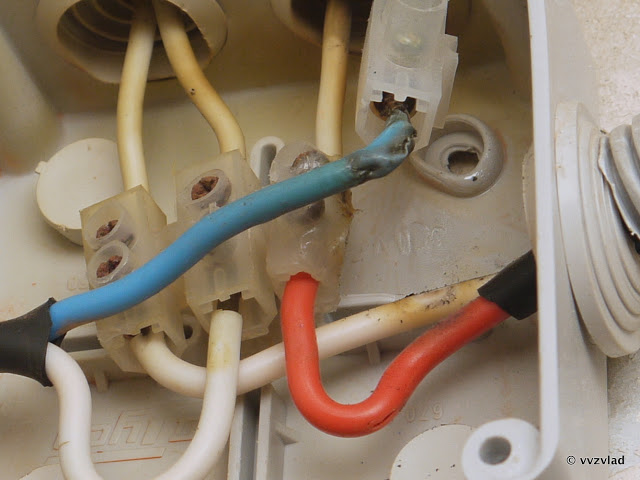
In general, it is advisable not to use such terminals. If used, then only with solid wires and to connect something small - a light bulb, a fan (not an industrial one). And no aluminum! It is also desirable to buy noname china, and the terminal blocks of normal manufacturers: Tridonik, ABB, Legrand, Believes Cost: from 10 to 50 rubles.
Terminal Blocks TB Series
Pads of solid black plastic.

Already better. They have a removable cover.

And this is the inner structure:

We unscrew, we put the wire, we tighten it.
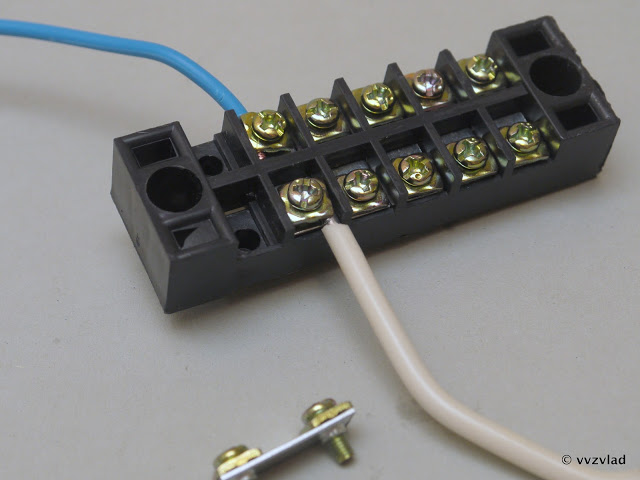
Pros - clamps not a screw, but a metal plate. Press it to the bottom steel plate. In addition, the upper part is not flat, but with a characteristic surface that increases the surface of the clamp:

Due to this, it is possible to clamp stranded and aluminum wires. Aluminum, however, it is desirable at least sometimes to check for a weakening of the clamp. I saw the pads on currents 25A and 40A.
The inconvenience is not cut and not divided, or buy a bunch of small ones (I have not seen less than 6 pieces), or even two wires put one big.
Cost: from 30 to 80 rubles.
Self-clamping terminals (WAGO or REXANT 773 series and their copies)
Or they are also called express terminals.
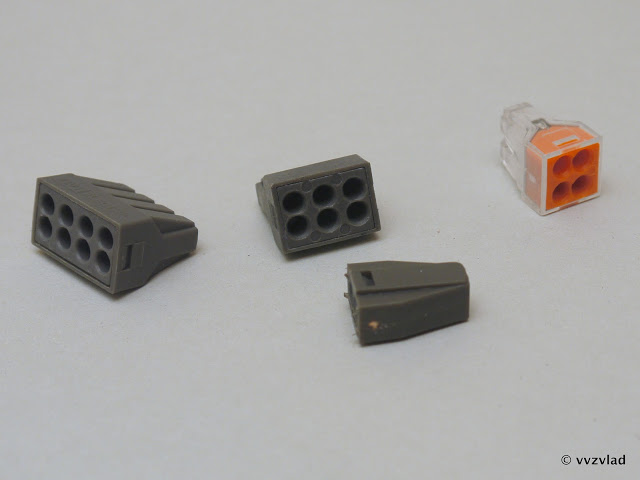
Very comfortable pieces. I cleaned the wire, put it inside to the end, it's ready!

Inside there is a clamping plate (blue arrow) and a small tin (orange) of tinned copper.
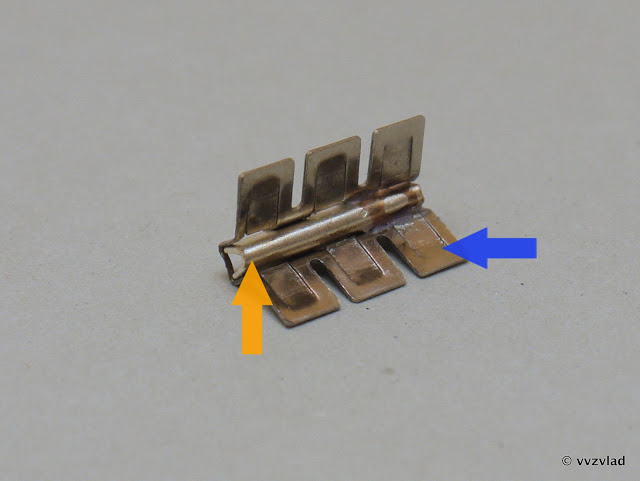
When wires are pushed into it, this is what happens:
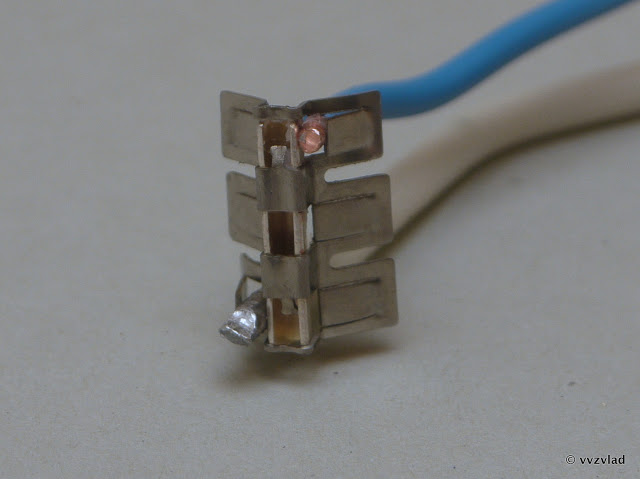
The plate presses the wire to the tire, maintaining pressure all the time. And the design of the pressing part on gives the wire to fall out. It's hard to pull it out.
In general, they are disposable, but if you really want, then gently rotating the wire around its axis it can be pulled out.
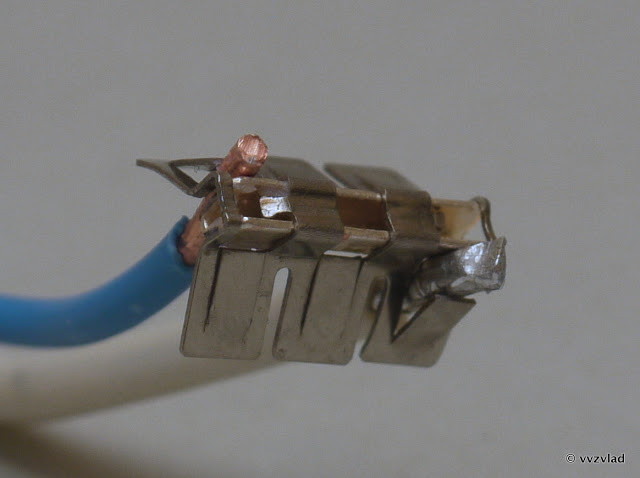
Since the copper contact is tinned, an aluminum wire can be inserted into such a terminal without fear of problems. At the same time, the constant pressure will not allow the aluminum wire to fall out.
White paste (on the next picture you can see the white mass on the contact) - this quartz sand with technical petroleum jelly, especially for aluminum wires. Quartz sand is an abrasive that removes the oxide film from the surface of aluminum, and petroleum jelly does not allow it to form anew.
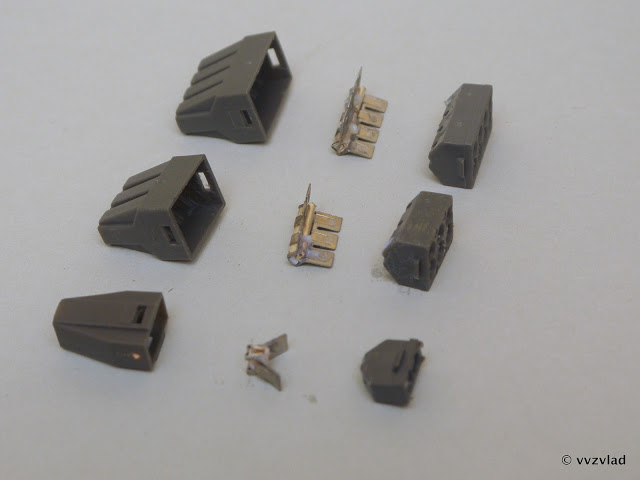
The same terminals, but transparent:
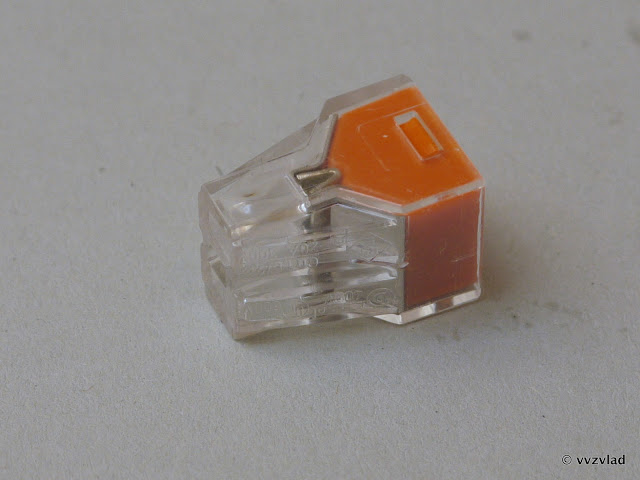
They do not differ anything except the dye. Well, in transparent terminals it is more convenient to see the wire - to the end of the shove or not.
The plastic is non-flammable, melts at higher temperatures without releasing harmful substances into the air.
Calculated for 25 A, and this is approximately 4 kW.
Attention! The currents are indicated only for the original WAGO terminals. The Rexant terminals (manufacturer - SDS groups) use a different spring steel, which relaxes when heated. Accordingly, the maximum current is limited, except as in lighting it is not recommended.
Here is the In which they held 50A and did not even melt. Well this is in ideal conditions - in the air, the cooling was good. And the terminals are original, yes.
Cost: from 2 to 6 rubles, depending on the number of contacts
WAGO 222 terminals with levers.
Saw only vagovskie, others do not produce.
For especially difficult cases, when there are several types of wires, different thicknesses, aluminum, copper and so on.

Raise the lever:
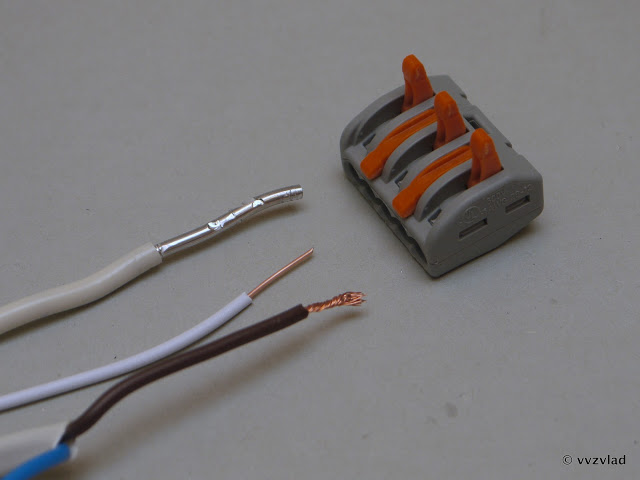
We stuff wires, lower the lever:

If necessary - you can raise the lever, pull out the wire, insert the other. And so many, many times. An excellent thing for those circuits, the wiring of which can change a bunch of times.
Eat everything. Current - up to 32A. Inside - the plate that pushes against the common tire is connected to the lever.

A cunning design, in general.
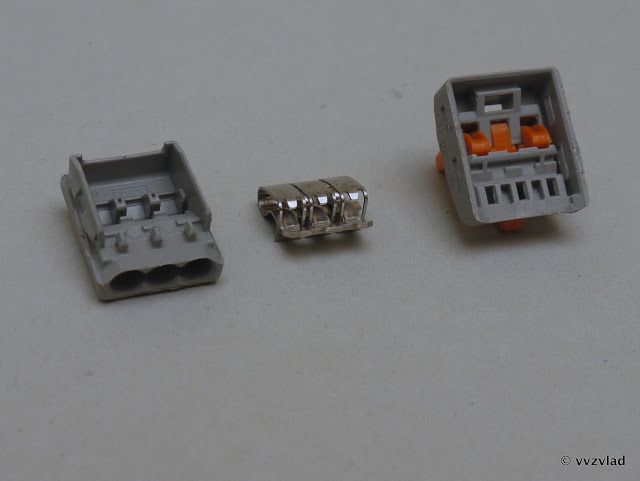
Shinka - irradiated copper, as usual:
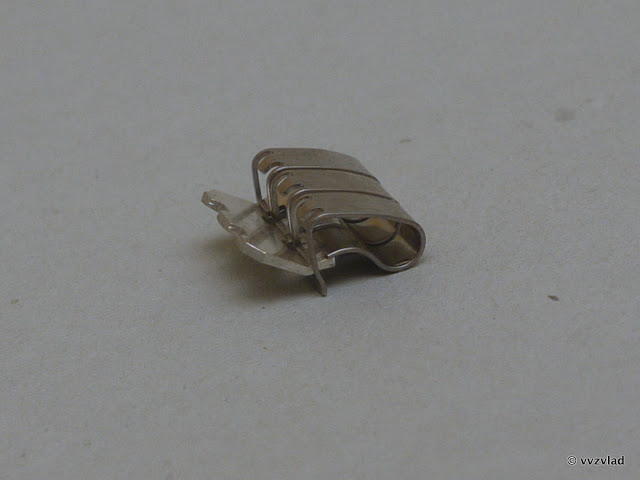
Cost: from 5 to 15 rubles.
Scotch-loki, ScotchLok, electrical connector with plug-in contact.
This is for the weak point (network, phones, LED lights, etc.).
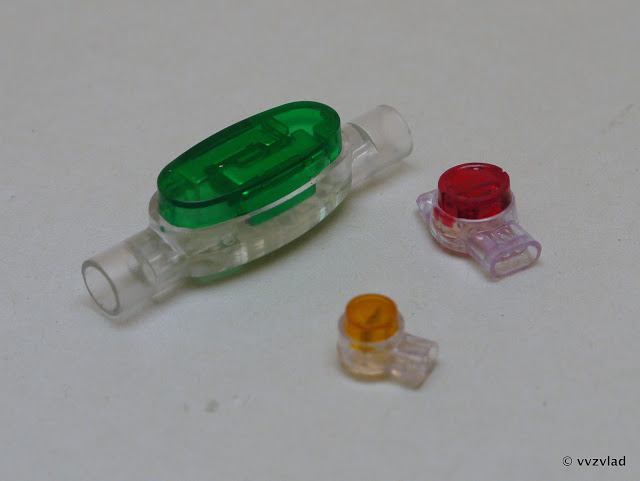
The meaning is simple - several wires are stuffed into such a thing:

Then it snaps in with pliers or any pressing tool. No, there is certainly a special tool, but I do not see the point in it - it is a small pliers with flat sponges.
Especially they are liked by installers of SCS and networks, for simplicity, cheapness, waterproofness, and lack of need to remove insulation.
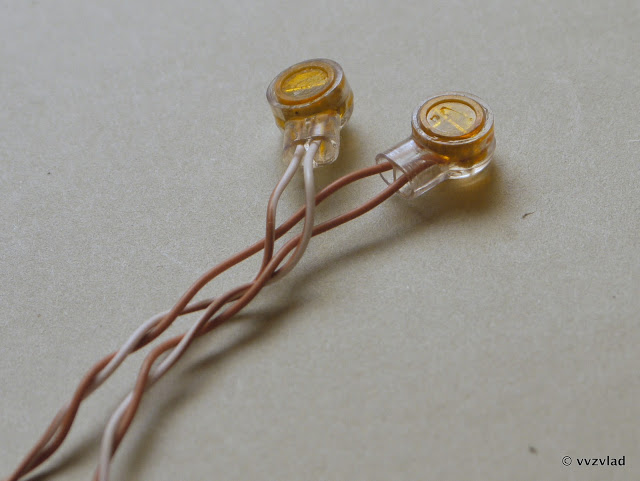
Inside - a hydrophobic gel, which protects against corrosion, moisture, oxidation, etc. And a plate with a cutting-clamping surface:
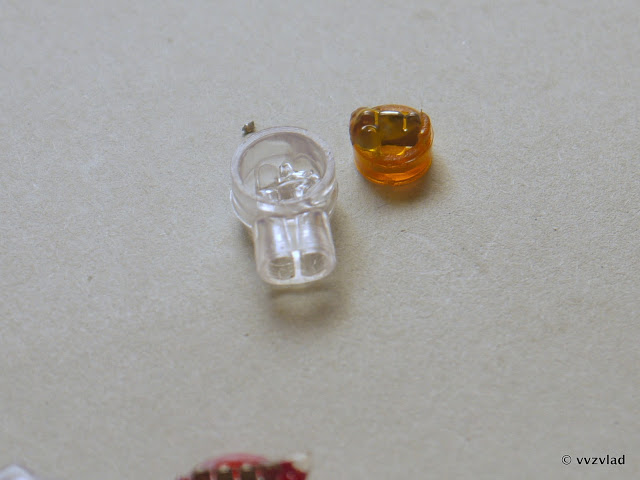
Or two plates:
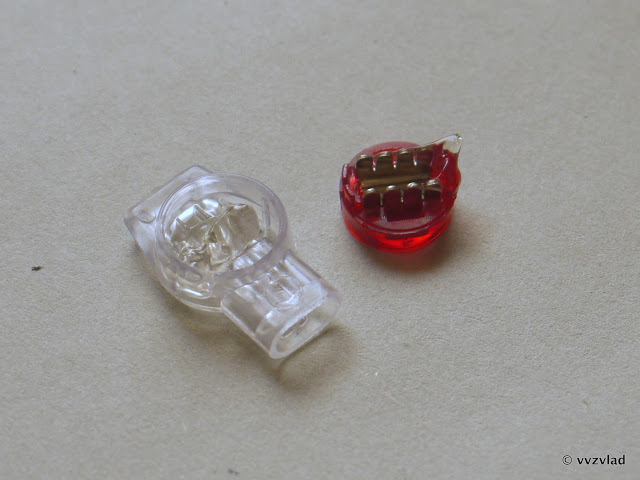
Here we can see what happens to the cable after being ground:

Knives cut through the insulation, and firmly pressed against the wire. Still there is a version for two cables at once, and the plates are slightly thicker - it is quite suitable for lighting:

They are disposable and non-serviced. It is necessary to replace - bite off a piece of cable with them, and put a new one.
Cost: from 1 to 4 rubles apiece.
For high currents
For such cases, there are sleeves:
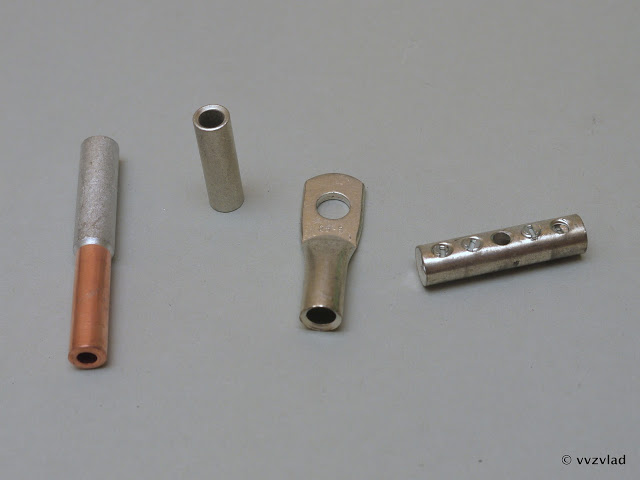
At the top - a connector sleeve of aluminum and copper cable, at the bottom - a universal copper irradiated:
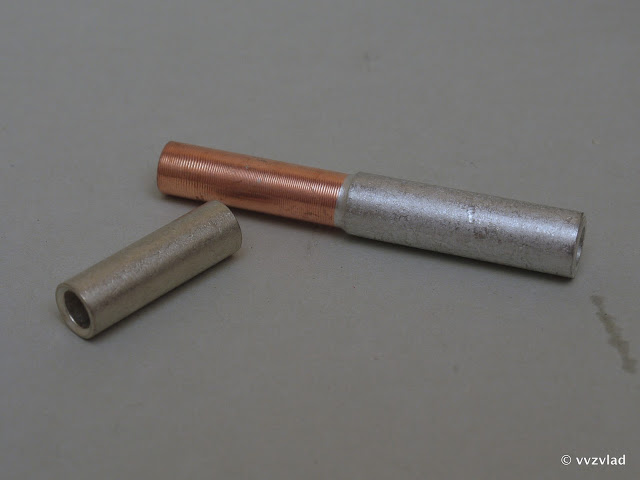
Inside the wire (or several) is shoved, the sleeve is crimped with a special tool. Unfortunately, some kind of bad person has pinned my pincers, so I will not show them. Here's a picture in Google:

But this looks like a crimped sleeve:
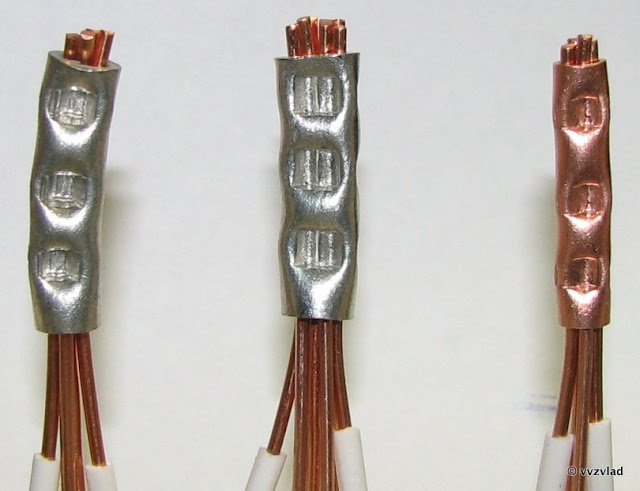
The huge plus is that with the right size and correct crimping the resistance does not decrease compared to conventional wire. And unattended, which is sometimes important. This means that it can be walled up (after normal isolation, of course) into the wall, buried in the ground (taking care of the waterproofing), and so on.
Sleeves with a flat end and a hole are used mainly for grounding, when the wire must be connected to the housing:
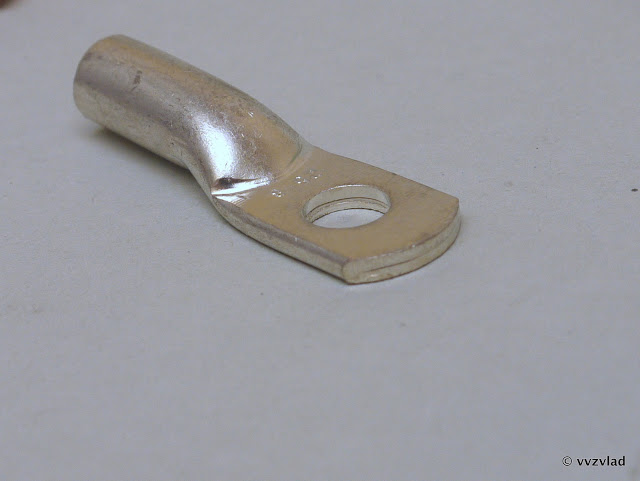
Sleeves with screw clamp - when you need to clamp the wire without tools.
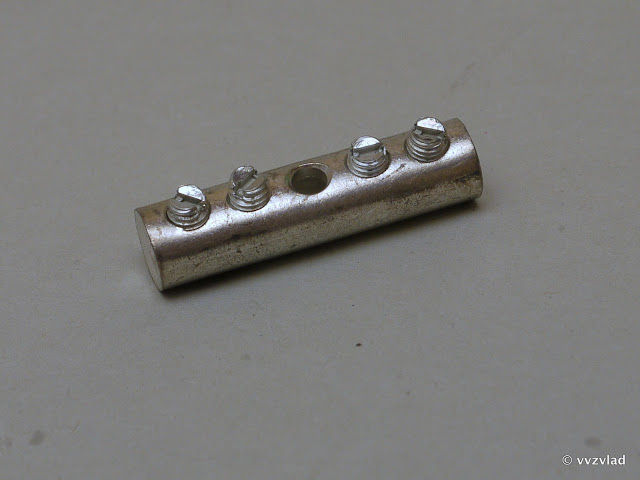
The currents are analogous to currents for the cross-section of a copper wire that coincides with the inner diameter of the sleeve.
Cost: from 10 rubles per sleeve, from 1000 for crimping.
About stranded wires
And still there is a situation when it is necessary to connect single-wire wire to multicore wire:
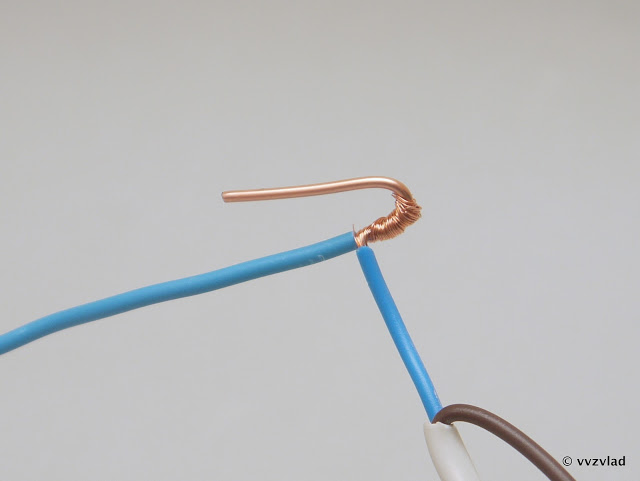
No, in general, you can irradiate and clamp as a mono. But there is an easier variant:
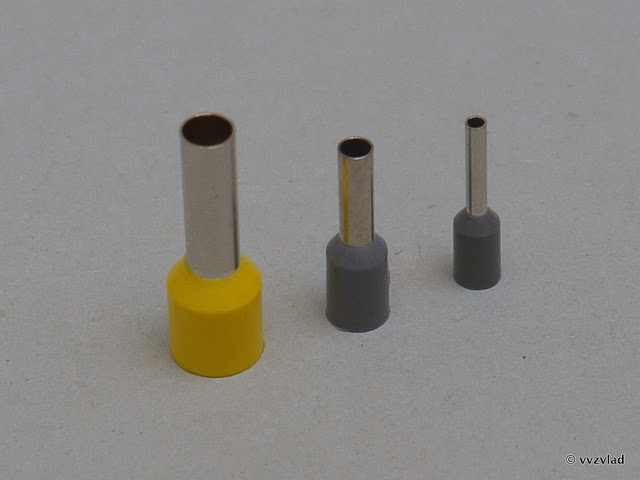
Called NSHV - Tip Shtyrevoy Sleeper Insulated. The meaning is simple:

We select its diameter under the cross-section of the wire, gently twist it so it does not crumble, put on the tip and press it along the entire length (well, at least 3-4 times). Everything, now this wire can be clamped into any kind of connection, not being afraid that the veins will break off, the contact or something else will break. It is important to choose the correct diameter of the tip depending on the wire, otherwise the contact will be worse, and the wire can slip out.
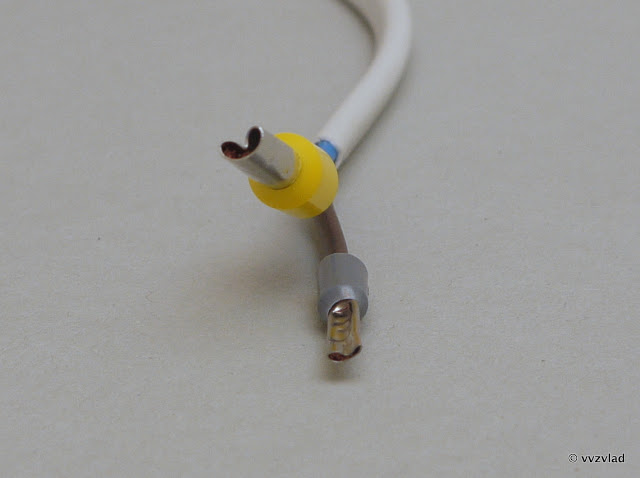
They can be clamped at least with a hammer with a screwdriver or pliers, but it is better to use a special tool, since it's not very expensive, from 500 rubles to 2000. Better, of course, do not take Chinese non-orders, but take 30-40% more than the minimum price.
I use this:

Combination wiper wires:
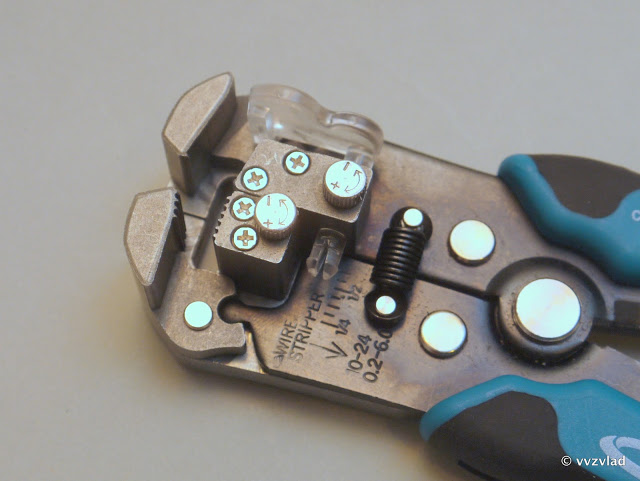
And swage:
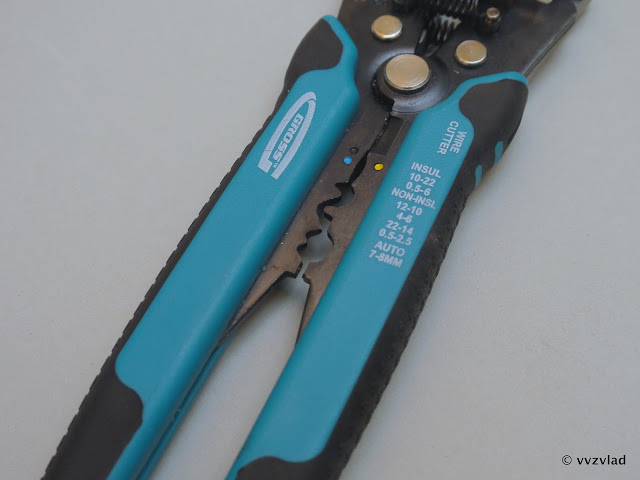
Offers
Scheme
There are sleeves with PVC insulation
There are thermo-shrink sleeves - they are generally airtight
Possible branches
From experience with work with self-clamp terminals and twists
Twists are different, twists are important!
Twisting
Thank you Habrhabr.


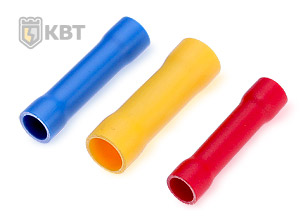

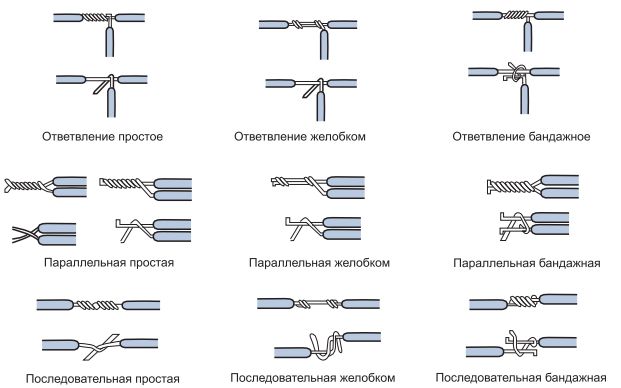

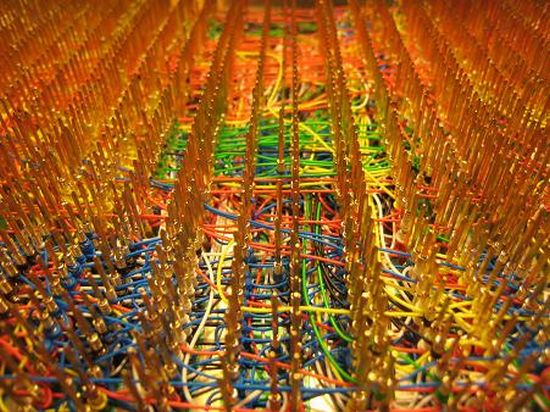
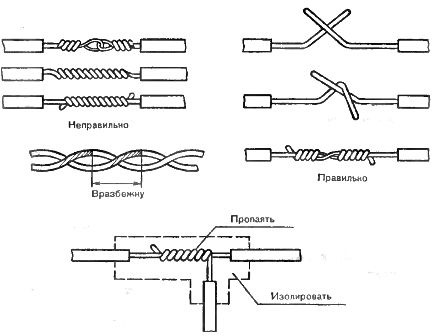

Comments
Commenting on, remember that the content and tone of your message can hurt the feelings of real people, show respect and tolerance to your interlocutors even if you do not share their opinion, your behavior in the conditions of freedom of expression and anonymity provided by the Internet, changes Not only virtual, but also the real world. All comments are hidden from the index, spam is controlled.